Heroes: Eric Johnson
An unsung hero comes into focus

This feature appears in V137, now available for purchase
When a young Eric Johnson framed his first photograph, it was an act of fate. And when the photographer lensed a then-rising Lauryn Hill and an already-happening Notorious B.I.G., it was destiny. The force behind-the-lens of several of the most buzzed about R&B and Hip-Hop artists of the late ‘90s—Hill, Missy Elliot, Aaliyah—Johnson is a formidable creative in his own right. Too, the creative remains a major player in the industry to this day, collaborating with the likes of Doja Cat, Shygirl, Rico Nasty and more. “When I’m photographing artists there is no trick or anything,” Johnson says from his all-encompassing studio in Tribeca, New York. “I try to capture someone’s spirit and overall vibe.”
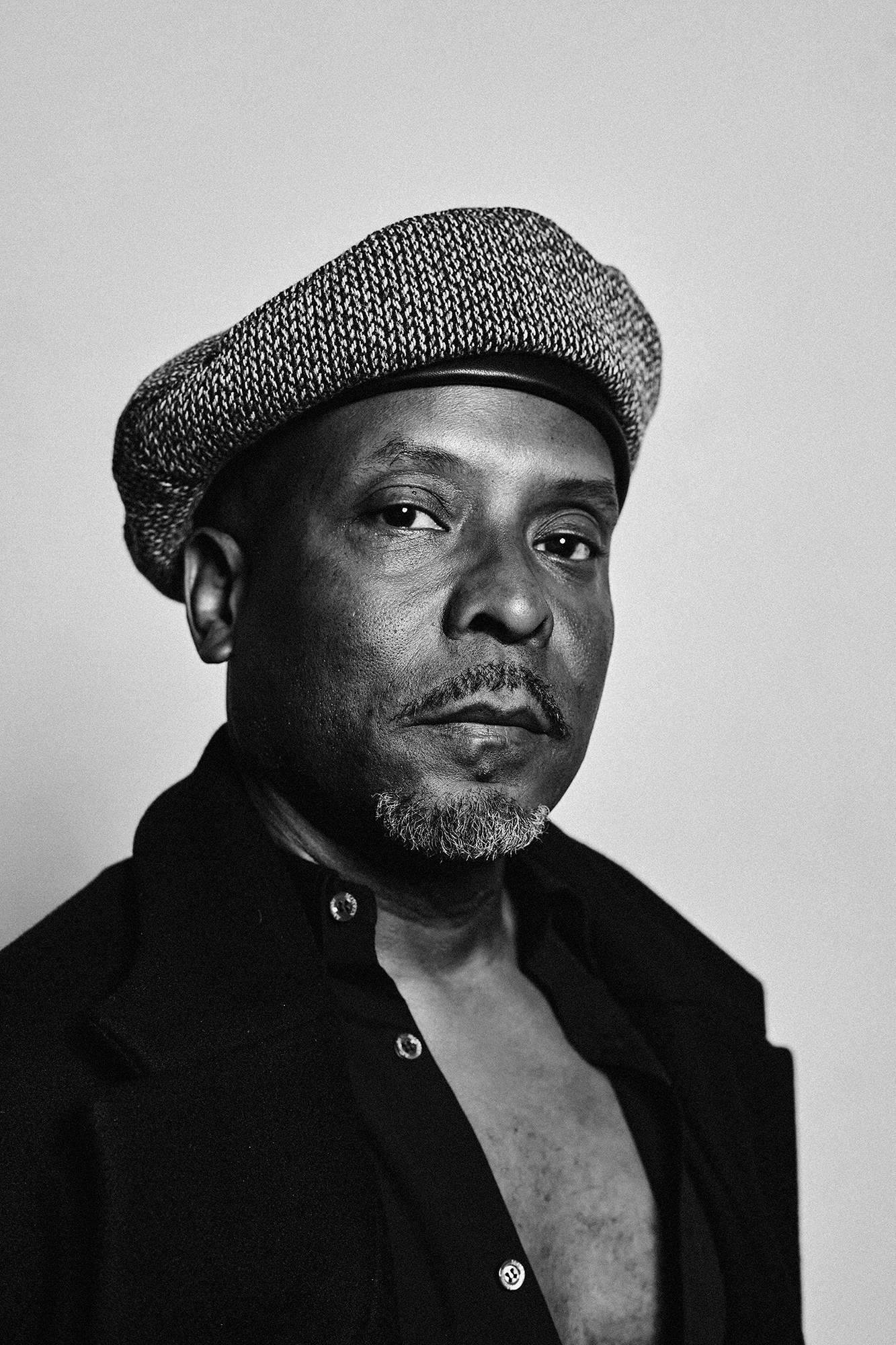
Raised in Newark, New Jersey, Johnson got his start in the dynamic darkroom studios of Constance Hansen, a storied photographer who Johnson was drawn to in his early years. It was this very place where the burgeoning multi-hyphenate honed his photographic eye and one-of-a-kind artistic vision, all the while attending NYC’s Fashion Institute of Technology. And though the visionary began taking photography seriously here, his infatuation with the medium started years prior while he roamed the halls of middle school. “I was a really artsy kid from Newark, New Jersey,” Johnson shares. “I would do my art, but then I would also do other kids’ art because they did not want to do it.”
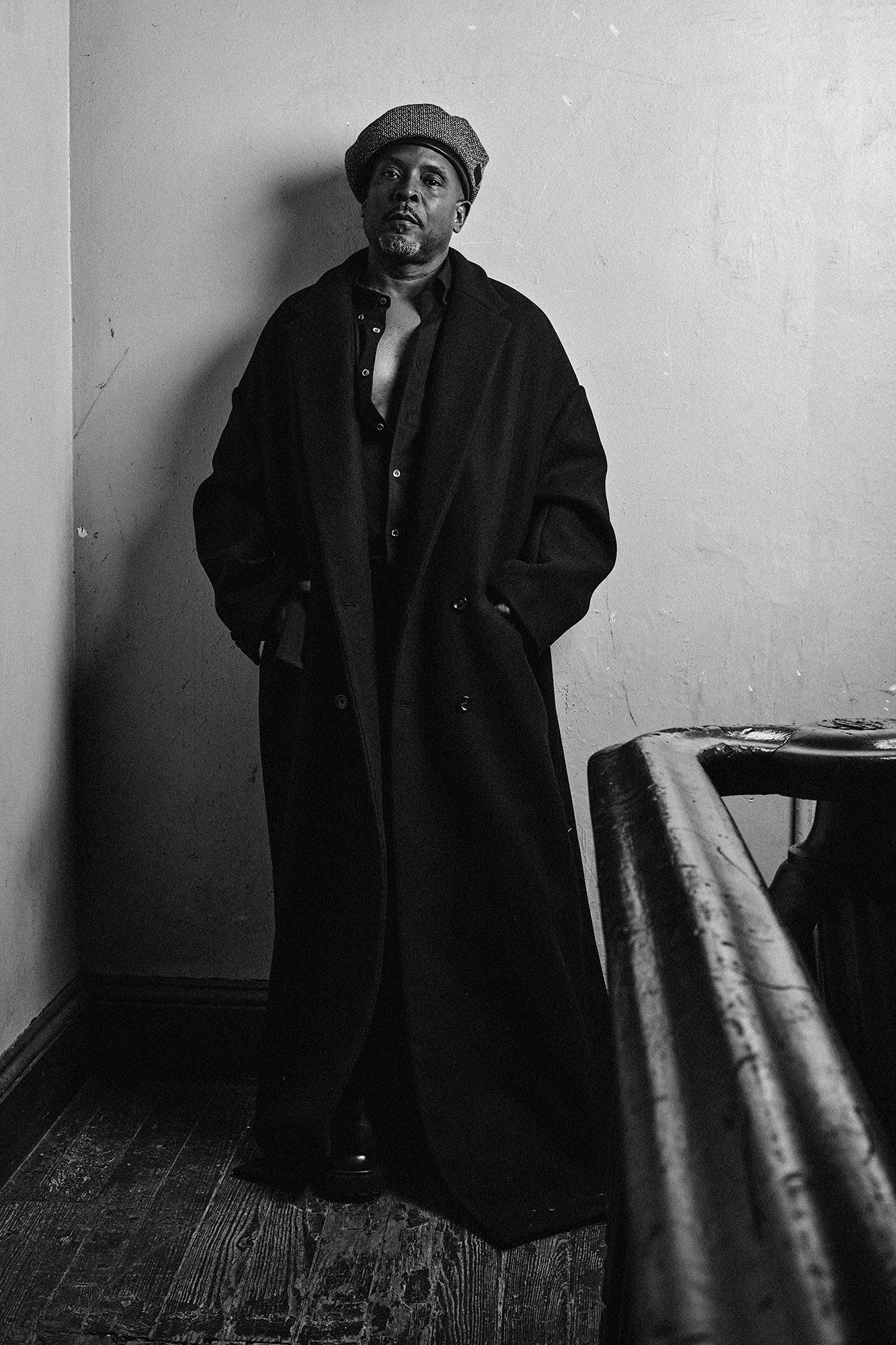
Apart from the classroom, Johnson matured his artistic eye, becoming a regular at famed Manhattan haunts like the always-invigorating discotheque Area, the bustling Lower East Side Pyramid Club, and decidedly less rowdy hangouts like neighborhood bookstores and record shops. There, the photographer captured candid snapshots of club-goers at their best and pursued visual encyclopedias of ‘70s British Punk. “They’d have cool looks, cool clothing and they’d be ready to fight, and that is a [spirit] that has always interested me,” Johnson recalls. And in a move of destiny—against the backdrop of blaring, upbeat music—Johnson met his most dazzling muses in the form of New York’s avant-garde, ‘80s rockers, and even music’s movers-and-shakers.
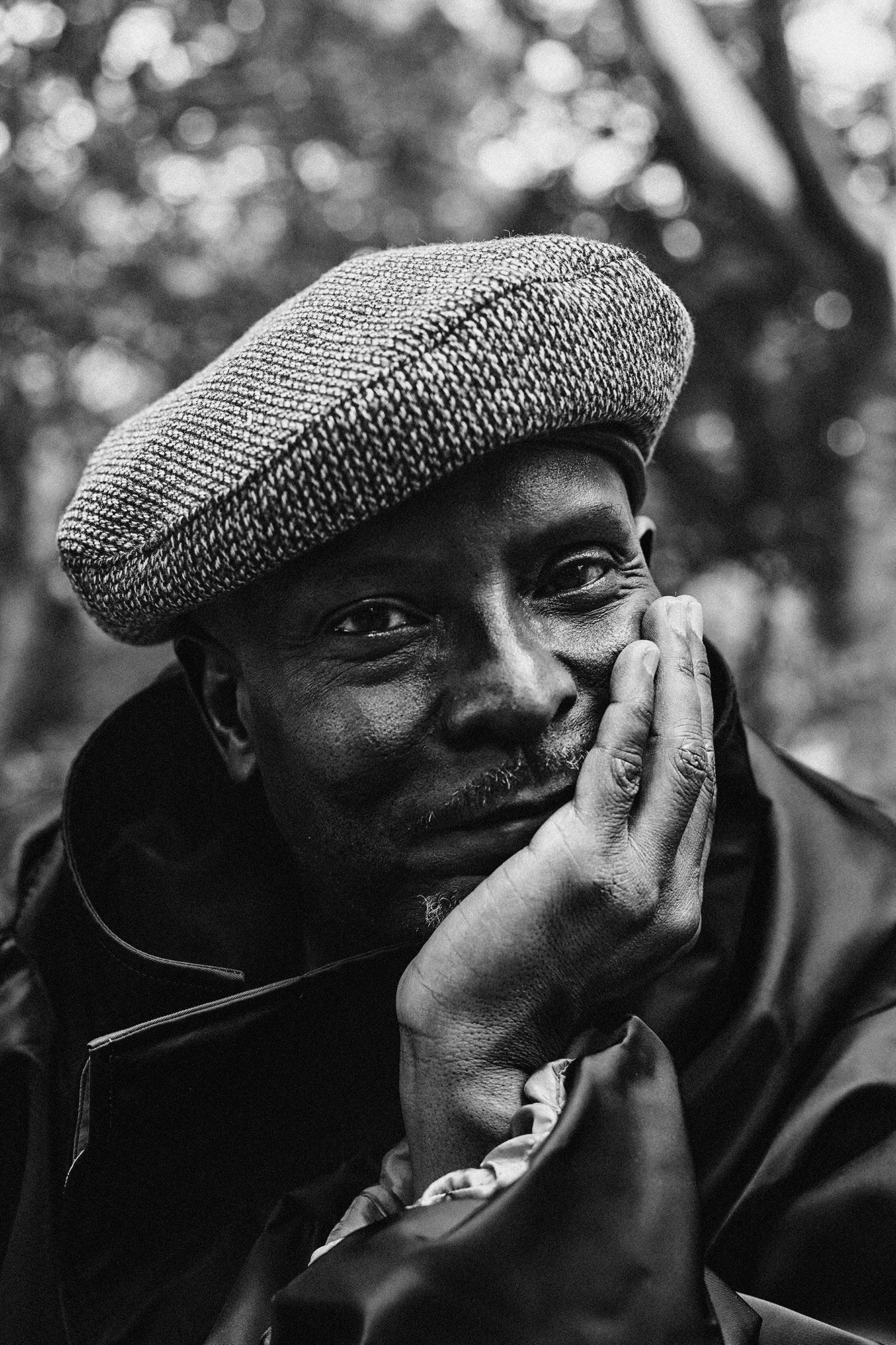
But even then, while collaborating with the likes of Hill and Biggie, Johnson didn’t always receive the flowers he deserved. It wasn’t until the early aughts, with the invention of the Internet, when teens started rediscovering the genius of Johnson. “It’s like one day I woke up and my photos were everywhere,” he shares with V. “All of a sudden the internet came along and the younger generation of people were loving my images.” Now, aside from photographing established heavyweights, he’s ready to discover the next generation of multi-hyphenates on the precipice of greatness. And, for his next moves, Johnson is turning to publishing, curatorial exhibitions, and fashion-focused ventures. And as future generations look back at the work of yesteryear’s musical powerhouses, Johnson’s photographs will continue to serve as a living archive. Where there is a yearning for the past, there will always be an infatuation with Johnson and his images: the undying force of fate.
In an exclusive interview, Johnson catches up with muse (and V117 cover star) Kelsey Lu to discuss his artistic awakening sparked by a high school photography course, how he found his way into the music scene, and why his body of work remains as potent as ever…decades later.
Read below more below!

Kelsey Lu: I love everything you’ve been doing, so congratulations on that! [You’re] finally, getting your fucking flowers.
Eric Johnson: It’s so funny because, you know, I did this thing in London, they gave me an award there. When they did this little video [tribute for me], someone said, “Oh, [you] may not be as famous as [you] should be.” And you know what? I hear that so often. But what makes it even more interesting is I never wanted to be famous. So throughout my career, I was doing all of these shooter and I would just not [hang] around. Maxwell used to tell me in the ‘90s, “Everybody is into your photos, but you’re not out basking in it.” I would take my photos and then I would hang out with my homies in the Bronx. I was always interested in the hood and street lifestyle. I would do all of this commercial stuff that would be really popular and then I’d be in the dodgiest places in the hood with all of these dodgy characters. Even now I try to [keep a low profile], I shot Doja Cat for Interview, and they had to force me to come to the party. But then of course, I left before most people got there. Everything I’ve always done has been to not get attention has caught up to me now. Throughout all of these years, I think it’s so interesting when people say, “It was funny getting to know you or work with you.” because everything I’ve ever read about myself online, it normally says something like, “You may not know who he is but you know his photos/work.” It never even dawned on me that this was the perception of me and my work. Maybe with social media, especially with younger people, it makes you very conscious of people knowing who you are…and I guess that makes you successful in a sense.
KL: But that comes from the inside, right? Success comes from the inside and it’s about passion and what you love to do. I think especially with you talking about how you would just go and hang out in the hood or hang out wherever and just kick it…I feel like that comes out in your work. I was looking at your work before we got on and I’ve seen your work over the years, but I was like, “Okay, I want to spend time looking through everything,” and I wrote down some things that came to mind for me. Timeless, black, strength, classic, beauty, chic, sexy, fun. Your work embodies all of that in such a natural way. How you bring out the best of each subject that you’re photographing speaks to the type of person that you’re that you are: warm, kind and genuine. I find that to be extremely important, specifically when it comes to the portrayal of black people. I’m curious about how you remember the first time that we met.
EJ: What is different now, is I feel like I’m more involved now than I was before. So people see all of those photos from the past and I was just showing up and doing my job. But now my life is different in the sense that I’m a lot more involved. And what’s so great is that I have photos of everything. Of course I remember exactly how we met. Khalif was like, “Oh, my God, I’m bringing Kelsey over.” And I was like, “Do it.” So he brought you over, and that was the first time I met you. It’s so cool that basically, I didn’t really have a studio all of that time in the 90s. I would shoot a lot of things on location and we’d rent studios and things like that. When working in the magazine [world], there were times where I would have little-to-no budget…but we always made it work. I’ve been shooting since I was a teenager, in the 80s. It’s gonna be almost 40 years since I started taking pictures in high school.
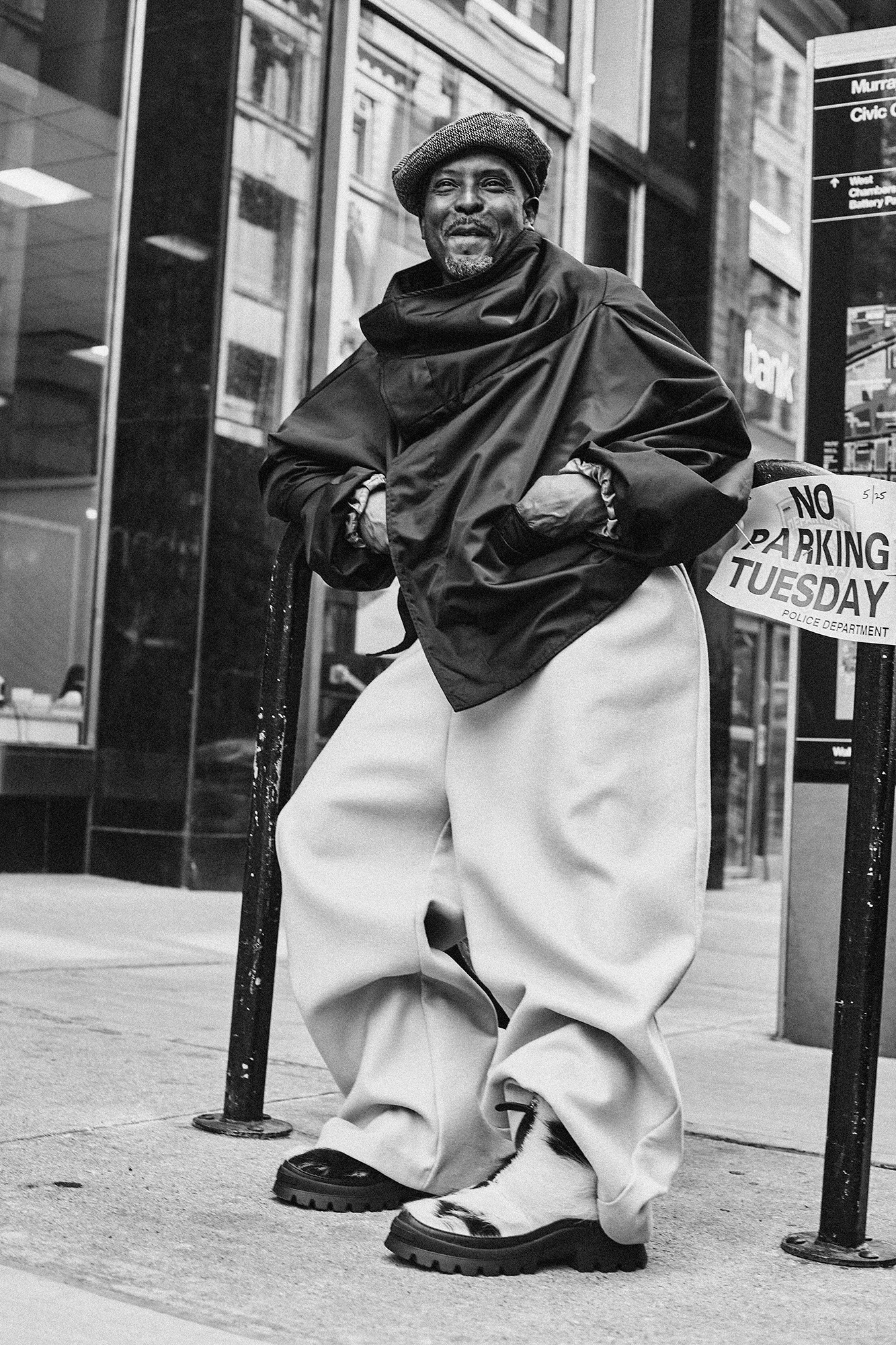
KL: What were you taking photos of when you were just starting out as a teen?
EJ: I went to the School of Performing Arts in Newark, in the hood, but it was the “artsy” school. I was really into drawing. And then during my junior year, they gave the art students half-a-year of illustration and the other half was for photography. We had access to a darkroom and all of these [resources]. As soon as they gave us the opportunity to study photography, I would say I became a photographer. I began shooting all the kids in school. Since it was an arts high school, there were kids who were into fashion, so I would just shoot the girls in their fashion and designs. I always had a car also, I’m like a “gearhead” (Laughs). So we’d drive to Asbury Park and things like that just to take photos. It was like impromptu photo shoots. When I was young, I was popular with the older kids. Now that I’m a bit older it’s probably the other way around (Laughs). There are so many creative kids just hanging around back then and even today, that’s how we met. I’d meet someone who’s interesting, they’d play music and we’d hang out. Because those kids are out doing shows, they’re more out in the world than I am. I’m still kind of lucky in that way to have that connection to the youth and what is happening in pop culture. I remember when I shot you, I actually have a really good memory. And then I remember going to see a show.
KL: I was about to ask what your experience was like shooting me while I performed!
EJ: Oh my god, I have a funny story. I was telling Khalif, “This is why I fuck with her so hard.”
KL: Let me also say I need a stunt. It was specifically for the readers, it was specifically at the Rainbow Room, which is on top of the Rockefeller Center. And I was looking really catty and cute and sexy. (Laughs)
EJ: You don’t even really know the story. Everyone else was taking pictures of you. And I didn’t know you well enough to be very pushy. But in my head I was like, “Everyone’s over there taking their photos. What am I gonna do differently?” Everyone is snapping all at once from the same angle and same spot. And I always capture my photos when you least expect it, I get them on the low. And I remember you said something really cute and cheeky like, “You didn’t get the shot.” And I always get “the shot” because it isn’t when everybody else was taking their photos. So you didn’t think that I got the shot and then I totally got the shot. I just thought that was so cheeky! I felt like because of the photos that I’ve taken, I feel like most people are just not cheeky with me because they just feel like I’ve done this and that I’m a veteran. And that goes back to me saying why I hung out in the hood and things like that, because I love a cheeky personality that’s not really about kissing my ass or anything like that. But it’s still complementary and it’s cool. I said to Khalif, “She is cheeky as fuck. She’s my favorite, I love her.” (Laughs) “You didn’t get the shot”…I was like, imagine me not getting the shot.
KL: And you most definitely did get the shot (Laughs)
EJ: I loved that disco song you performed, still love it to this day. And the way that the lighting created a vibe. It may have just been the Rainbow Room but I was like “Wow, this is so tapped into disco.” I came in later like during the Area Nightclub and Danceteria. I was and very much still am into the underground scene…this is one other thing that really drew me to you. I’m really into that indie vibe. When I was coming up in Newark, I would listen to Blondie and things like that. It’s so funny, I’d be in a new Mustang convertible, and I’m with all the kids in the hood, while blasting Blondie. They’d be so annoyed. So whenever I jumped out of the car, they changed the music to “Black” music. You are like myself, who amongst our community, we have this alternative taste. That’s really what I love about you. And I think that it’s so interesting now that people really associate me and my work so much with Black culture. When I was super young, I would go to New York by myself. I was 13 or 14 years old, on the PATH train. And I would always spend my day going into bookstores and record stores. So Alt New Wave, all of that kind of stuff was my shit. And I would always look at photographs of the punk scene in London from the ‘70s. So I think what resonates with people is that I brought a bit of that to black culture. People were always like, “You’re different. You’re different from your peers in a way.” And I didn’t realize until later, that that probably came from the fact I’m really an alternative head.
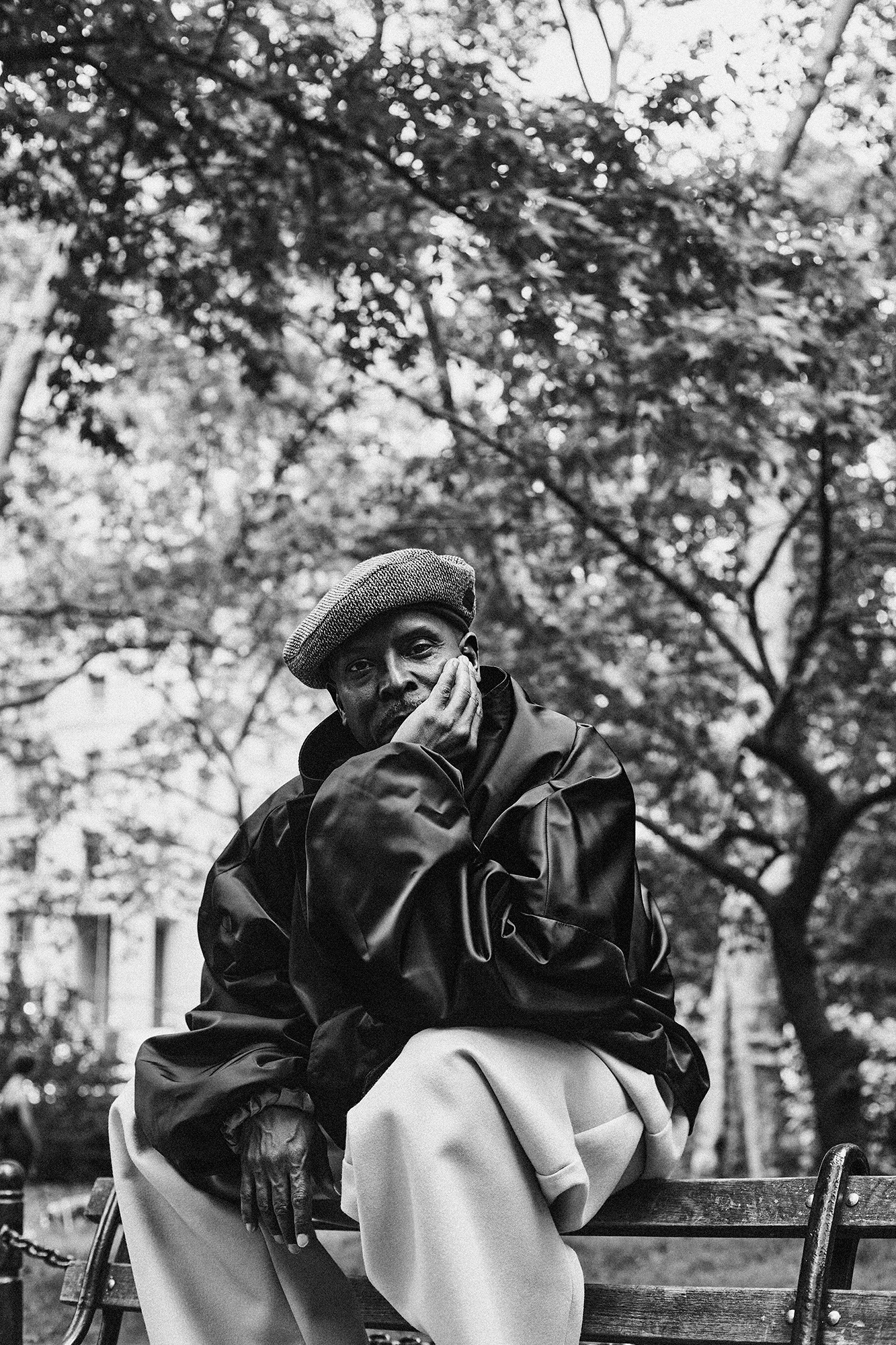
KL: Right. But also, what’s beautiful about that is that blackness is not one being, right? It’s not one way of thinking or existing. Even with music, you’re not listening to one thing. And I feel like now there is this global acceptance of that. We can be whoever we want to be and however we want to be. But I feel like the way that you’re able to bring what influenced you and what you were passionate about into the space, culture, and into your work, it just naturally worked.
EJ: Well, you know what is true? We’re not one thing. I think that you’ll probably relate to it too. We’re different things but that’s a tough culture in the sense that, especially back in the day. There are rules or conditions that were put on black people…telling them to be black enough they had to do this or that. It’s really great now that we’ve become open-minded. There was a way that music had to sound and a way that photos had to look to be popular amongst black people.
KL: And with that in mind growing up did you feel pressured by either the music industry or commercial industry into shooting black people in a specific way?
EJ: I have to show you some of my photos from the ‘80s before I even got into hip hop. I mean, I kind of got into hip hop because hip hop was blowing up while I was growing up. But I think that because I had a really specific point of view, I mostly only got the jobs I was supposed to get. Like shooting Lauryn Hill, Kelis, Maxwell, D’Angelo, the Roots, Common, A Tribe Called Quest, De La Soul. I always got those, I got everyone in that circle because that seemed like me to photo editors and art directors. There would be commercial artists that I would get but they were really a minority, they were a smaller group than what was really popular. And if you look at my photos, I don’t have photos of Brandy, Monica and artists like that. So I didn’t really have many people necessarily wanting me to be different because those were the nerviest artists. When I got the opportunity to do “[The] Miseducation [of Lauryn Hill]” I was just like, “This is insane.” Because we knew it was going to be the hottest thing. So in actuality there was some balance between the indie/”lowkey” artists and the more popular ones. There’s a whole world where I’d shoot Biggie and NAS, but I never shot like Jay Z or like Little Kim…but I shot with foxy all the time.
KL: With musicians is it something that you said, “I really want to focus on musicians,” or did it just come naturally? Like, it just kept leaning that way?
EJ: It kind of happened naturally. But that said, I was really always a music head. I have loved music ever since so forever. My first single was “Misdemeanor” by Foster Sylvers. I remember buying that for 45 cents and I was so young. I took change out of my mom’s fur coat on the counter. Fast forward to the beginning of my career, I’d look at the back of record covers, and see Profile Records, Sony Music records, and they would have the address. In some cases, they included telephone numbers, so I’d call and say, “Who can I speak to in the art department that looks at portfolios?” So I would just call up and say, “Can I show you my work?” My work does go beyond music though. I shot actors too, I shot Matt Dillon for RollingStone in 1989, that was my first shoot for RollingStone and he was a heartthrob back then. I have a really [extensive] archive of different types of people. I shot a lot of directors. But the musician focused work that I shot is so popular that people haven’t really started talking to me about all the other stuff I shot. Like all the indie bands. People like Liz Phair and Magna Pop. I shot a lot of that stuff but they’re not as popular as Biggie and Aaliyah.
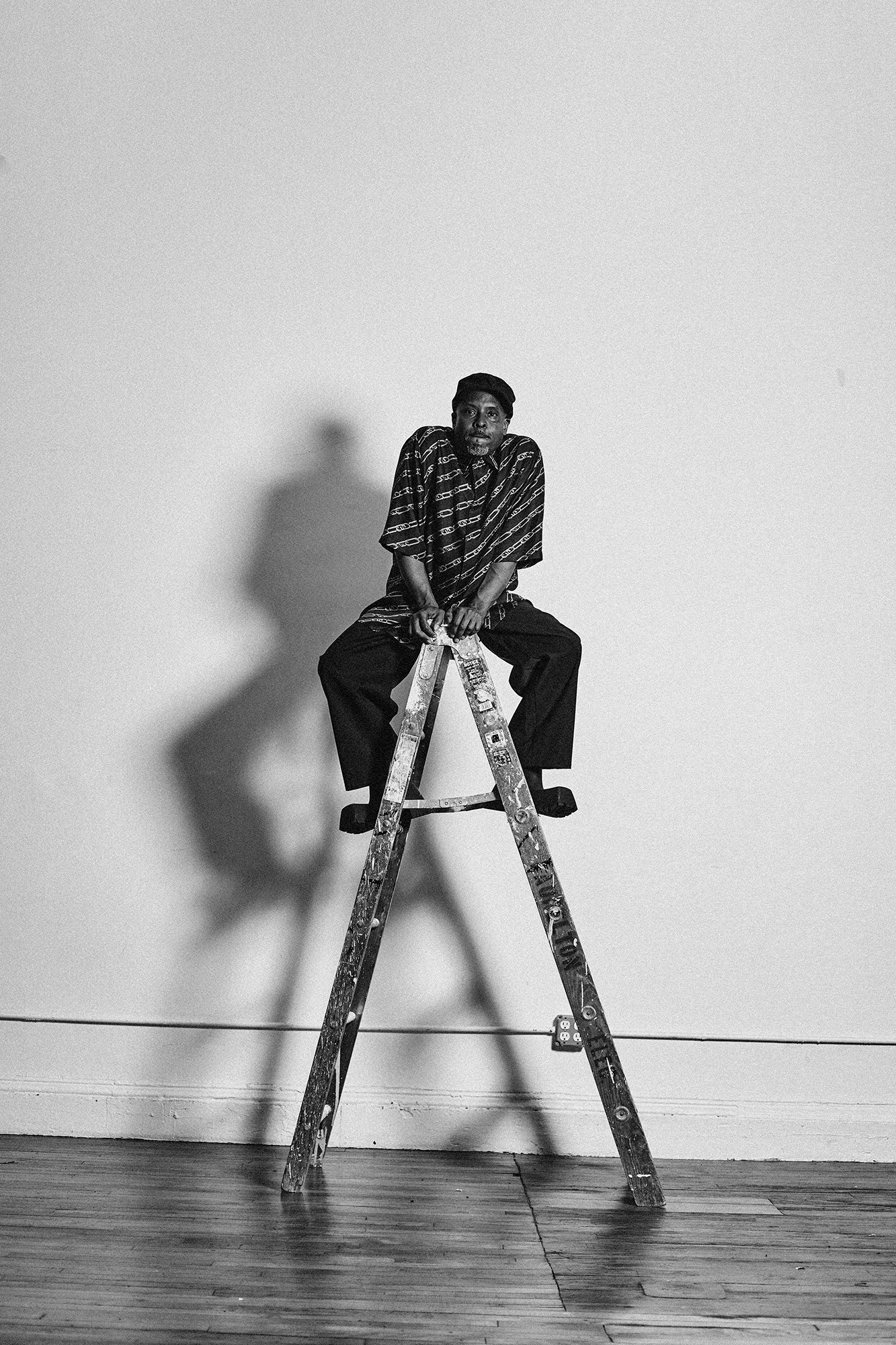
KL: Well I feel like that’s usually what the media lean towards as a staple for obvious reasons. But it didn’t start there. What message or advice do you have for young photographers out in the world with an interest in shooting artists, especially when dealing with the demand that exists within the industry?
EJ: I was speaking to this kid. He’s a really great, lovely young photographer. Something I realized is that a lot of the younger photographers who I talk to, I feel like in a way they want to shoot a lot of people that I shot from my era because they’re so iconic. I personally believe it’s really clever to tap into your generation and your culture. To get great photos of people on the rise now, and once they’re older, they’re kinda more iconic…and your photos will be as well. All the photos I got of these kids initially, and even now…like photos of you (Kelsey) and Doja, it’s always at a certain stage of their life and career. And that’s why those photos are ultimately going to be so important and timeless. So to all those kids out there, who want to shoot for the stars, of course if you can shoot any big artist, you should. But I feel like capturing the people coming up in your time will really set you up to be a photographer that has those important photos in the future.
KL: Definitely!
EJ: I also feel like if you pay attention to your surroundings, all of the answers are right in front of you. Don’t get caught up in the popularity part of it. If you’re really in tune with life on a street level, and in tune with your craft, everything will fall into place.
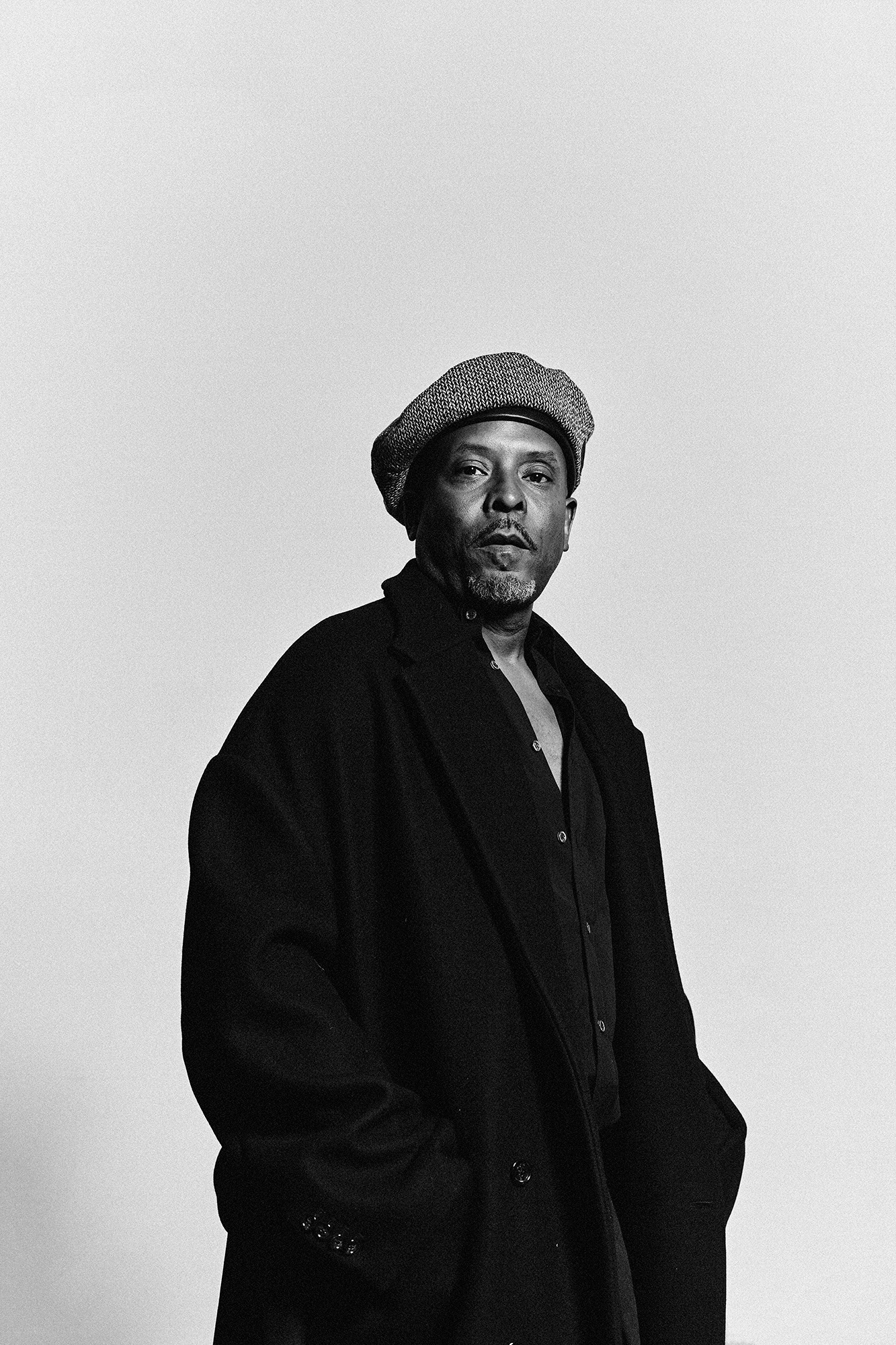
This feature appears in V137, now available for purchase
Discover More
